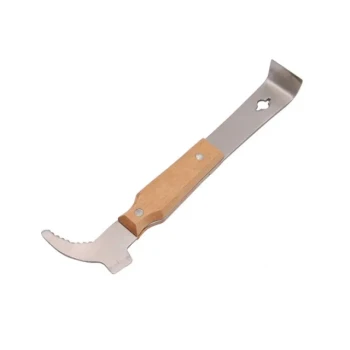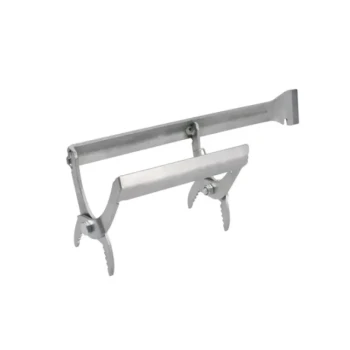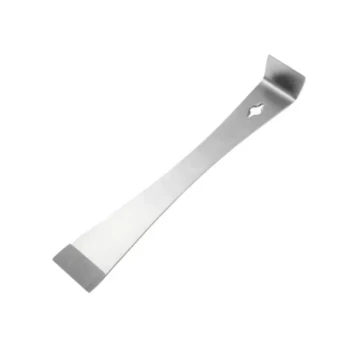The ideal number of beehives for a new beekeeper to start with is two. While it may seem logical to start with a single hive to "test the waters," this approach is deceptively risky. Starting with two colonies from the outset provides a critical safety net and management options that dramatically increase your odds of success through the challenging first year.
Starting with two hives is not about doubling your workload; it's a strategic decision that transforms beekeeping from a gamble into a manageable practice. It provides the essential resources to diagnose problems, save a failing colony, and accelerate your learning curve.
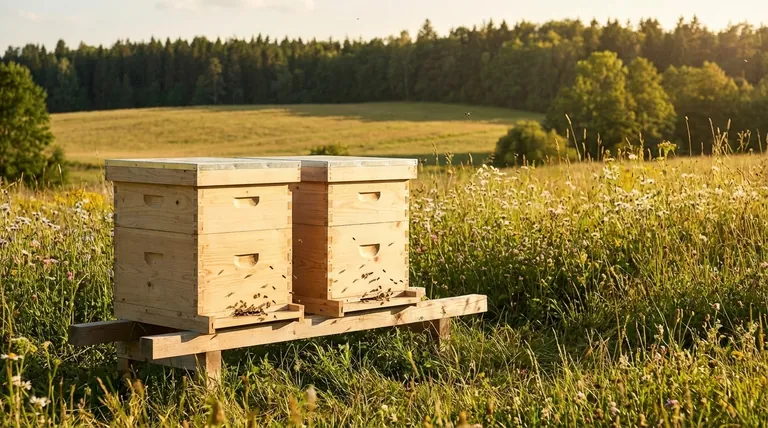
Why Two Hives is the Gold Standard for Beginners
The recommendation for two hives is rooted in a fundamental principle of risk management and resource availability. It gives a new beekeeper options when problems inevitably arise.
The Fundamental Risk of a Single Hive
A single hive represents an all-or-nothing scenario. Bee colonies can fail for numerous reasons, many of which are outside a beginner's control.
If your only hive loses its queen, succumbs to disease, or fails to build up properly, your beekeeping season is over. This can be incredibly discouraging and often causes people to quit the hobby.
A Built-in Comparison for Learning
With two hives, you have an immediate, side-by-side reference point. You can constantly compare the colonies' progress, temperament, and population growth.
Is one hive bringing in much more pollen than the other? Is one colony calm while the other is aggressive? This comparative insight is one of the most powerful and intuitive learning tools for understanding what a "normal," healthy hive looks like.
The Power to Share Resources
The most significant advantage of having two hives is the ability to balance and support them. Beekeeping is fundamentally about managing hive resources, and two hives double your options.
A strong hive can "donate" a frame of capped brood (hatching bees) to boost the population of a weaker one. You can also move frames of honey or pollen from a thriving hive to one that is struggling for food, which can be the difference between survival and collapse.
Simplifying Queen Issues
One of the most common and stressful beginner challenges is a lost or failing queen. Without a queen to lay eggs, a colony is doomed.
With a second hive, you can take a frame containing fresh eggs from your healthy colony and place it in the potentially queenless one. If the bees are truly queenless, they will use those eggs to raise a new emergency queen, saving the colony from certain failure.
Understanding the Trade-offs
While starting with two hives is the standard recommendation, it's important to acknowledge the practical considerations involved.
The Initial Investment
Starting with two colonies means double the initial cost for the bees themselves and the hive equipment (boxes, frames, etc.).
However, this should be viewed as an investment in the viability of your entire apiary. The cost and effort of replacing a dead colony often exceeds the initial cost of having started with a second one.
The Increased Time Commitment
Managing two hives does require more time for inspections than managing one. You will spend more time suited up and working your colonies.
This is often offset by the significant time and stress saved from troubleshooting a struggling, isolated hive with no clear solutions. The ability to solve problems quickly using resources from the second hive is a major advantage.
Making the Right Choice for Your First Year
Your decision on hive count should be based on your primary goal for entering the world of beekeeping.
- If your primary focus is maximizing your chance of a successful and educational first year: Begin with two hives. The ability to compare colonies and share resources is the single greatest advantage a new beekeeper can have.
- If your primary focus is minimizing initial cost above all else: You can start with one hive, but you must understand and accept the significantly higher risk of total failure with no recourse.
Setting yourself up with two colonies from day one is the surest path to a rewarding and sustainable beekeeping experience.
Summary Table:
| Number of Hives | Key Advantage | Main Consideration |
|---|---|---|
| One Hive | Lower initial cost | High risk of total failure; no resources for comparison or support |
| Two Hives (Recommended) | Built-in safety net; ability to share resources; accelerated learning | Higher initial investment, but significantly increases odds of success |
Ready to start your beekeeping journey with confidence?
At HONESTBEE, we supply the durable beekeeping supplies and equipment that commercial apiaries and distributors trust. Starting with two hives sets you up for success, and we provide the reliable foundation you need.
Let us help you build a thriving apiary. Contact our experts today to discuss your beekeeping goals and get the right equipment for your operation.
Visual Guide
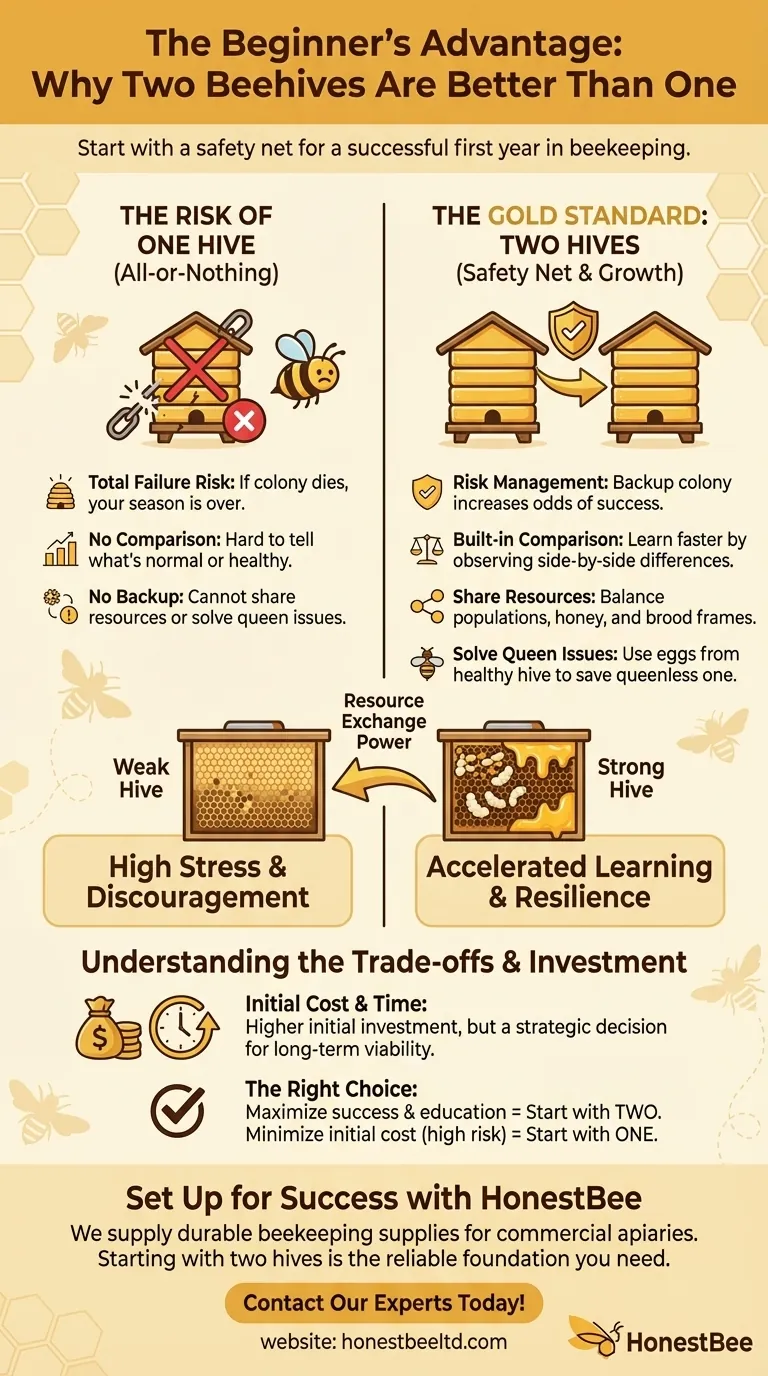
Related Products
- Langstroth Bee Hives Bee Keeping Box for Beginners Beekeeping
- HONESTBEE Professional Long Handled Hive Tool with Precision Cutting Blade
- HONESTBEE Advanced Ergonomic Stainless Steel Hive Tool for Beekeeping
- HONESTBEE Professional Multi-Functional Hive Tool with Ergonomic Wood Handle
- Multi-Function Plier-Style Frame Grip Hive Tool
People Also Ask
- What basic equipment is needed to start beekeeping? Your Essential Guide to a Confident Start
- How does the ease of access differ between 8-frame and 10-frame hives? Choose the Right Hive for Your Body
- Why might a beginner be advised to start with a Langstroth hive? Unlock a Supportive Beekeeping Ecosystem
- Why were wooden hives traditionally preferred? For Natural Beekeeping Aligned with Bee Biology
- Should a beginner try a different type of hive? Start with a Langstroth for a solid foundation.



